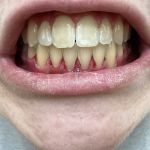How to Prevent Gum Disease in Children: Tips for Healthy Teeth and Gums
As parents, it’s essential to ensure that our children maintain healthy habits that promote lifelong well-being. One of the key aspects of their health is oral hygiene, especially when it comes to preventing gum disease. Gum disease, also known as gingivitis, is a condition that can affect children, but it is preventable with the right care and routine. In this article, we’ll explore effective strategies to prevent gum disease in children, including the best practices for brushing, flossing, and nutrition. We’ll also cover the importance of regular dental visits and share real-life examples to help you understand how to keep your child’s smile healthy.
1. Understanding Gum Disease and Its Causes
Gum disease occurs when plaque, a sticky film of bacteria, builds up on the teeth and gums. If plaque is not removed through regular brushing and flossing, it can harden into tartar, leading to inflammation and infection of the gums. Early-stage gum disease, known as gingivitis, can cause symptoms like red, swollen gums and bleeding when brushing. If left untreated, gingivitis can progress to more severe forms of gum disease that can affect the bone supporting the teeth.
While gum disease is common in adults, it can also affect children, especially if they don’t practice proper oral hygiene. Other factors such as a poor diet, genetics, and certain health conditions can contribute to gum disease. However, the good news is that gum disease is preventable with a combination of good habits and regular dental care.
2. Brushing Techniques: The First Line of Defense
The most important factor in preventing gum disease in children is ensuring that they brush their teeth properly. Brushing removes plaque from the teeth and gums, preventing bacteria buildup. Here’s how you can teach your child to brush effectively:
- Choose the right toothbrush: Use a toothbrush with soft bristles that are gentle on your child’s gums. The brush should fit comfortably in their hand and mouth.
- Use fluoride toothpaste: Fluoride helps to protect the enamel of teeth and makes them more resistant to cavities. Make sure your child uses a small amount of toothpaste, about the size of a pea, to avoid swallowing excess toothpaste.
- Brush twice a day: Encourage your child to brush their teeth in the morning and before bed. Brushing before bed is especially important to remove the day's buildup of plaque and food particles.
- Proper brushing technique: Teach your child to hold the toothbrush at a 45-degree angle to the gums and move it in gentle circular motions. Make sure they brush for at least two minutes, covering all surfaces of the teeth.
3. The Importance of Flossing: Don’t Skip It!
Flossing is just as important as brushing when it comes to preventing gum disease. While brushing removes plaque from the surface of the teeth, flossing gets rid of food particles and plaque that get stuck between the teeth and under the gumline, areas that a toothbrush cannot reach. Children can start flossing when they have two teeth that touch, which typically occurs around the age of 2-3 years.
At first, your child may need help with flossing. You can assist them by using floss holders or floss picks, which make it easier to maneuver the floss between their teeth. As your child gets older, they can learn to floss independently. Make it a habit for your child to floss once a day, ideally before bedtime, to ensure their gums stay clean and healthy.
4. A Balanced Diet for Healthy Gums
What your child eats plays a significant role in their oral health. A diet high in sugary snacks and drinks can contribute to plaque buildup and increase the risk of gum disease. To help prevent gum disease, focus on providing a balanced diet that includes foods that promote healthy teeth and gums:
- Fruits and vegetables: Apples, carrots, and celery are not only healthy for your child but also help clean teeth naturally while stimulating the gums. These foods are packed with vitamins and fiber.
- Dairy products: Foods like milk, cheese, and yogurt are rich in calcium, which strengthens teeth and bones.
- Limit sugary snacks: Try to reduce your child's consumption of sugary snacks and drinks, as these contribute to plaque buildup. Instead, encourage healthy snacks like nuts, seeds, and whole grains.
5. Regular Dental Checkups: Prevention is Key
Another essential aspect of preventing gum disease is ensuring that your child has regular dental checkups. Pediatric dentists are trained to detect early signs of gum disease and other oral health issues. During these visits, the dentist will perform a thorough cleaning to remove plaque and tartar buildup, which can’t be removed through regular brushing alone.
It’s recommended that children see a dentist for a checkup every six months, starting by the age of 1. Regular dental visits not only help prevent gum disease but also ensure that your child’s teeth are developing properly and that any potential issues are addressed early.
6. Creating a Fun and Positive Experience for Your Child
Getting children excited about dental care can be a challenge, but making it fun is the key. Turn brushing and flossing into an enjoyable routine by using colorful toothbrushes, flavored toothpaste, or fun flossers. Let your child choose their toothbrush and toothpaste, which gives them a sense of ownership over their oral health.
You can also create a reward system to motivate your child. For example, give them stickers for brushing twice a day or reward them with extra playtime for consistently taking care of their teeth. Positive reinforcement will make the habit of brushing and flossing more enjoyable and less of a chore.
7. Recognizing the Signs of Gum Disease in Children
Despite your best efforts, it’s important to know the signs of gum disease so you can take action if necessary. If you notice any of the following symptoms, it may be time to consult with a pediatric dentist:
- Red, swollen gums that bleed when brushing or flossing
- Persistent bad breath (halitosis)
- Loose teeth or changes in alignment
- Receding gums or visible gaps between the gums and teeth
If you notice these signs, don’t wait. Early treatment is crucial to prevent gum disease from progressing and causing permanent damage to your child’s teeth and gums.
For more information on keeping your child’s teeth and gums healthy, visit Dentistry Toothtruth for expert advice and tips on children’s dental care.







 Dr. James L. Pelletier4.0 (79 review)
Dr. James L. Pelletier4.0 (79 review) Osseo Family Dental4.0 (135 review)
Osseo Family Dental4.0 (135 review) Wayne hills dental0.0 (0 review)
Wayne hills dental0.0 (0 review) California Dental Group4.0 (235 review)
California Dental Group4.0 (235 review) Coast Dental4.0 (545 review)
Coast Dental4.0 (545 review) Pro Dentists of Buford4.0 (575 review)
Pro Dentists of Buford4.0 (575 review) The Importance of Oral Health Education During Pregnancy for a Healthy Pregnancy
The Importance of Oral Health Education During Pregnancy for a Healthy Pregnancy Best Tips for Brushing Your Teeth Properly for Healthy Gums: Essential Techniques for Oral Health
Best Tips for Brushing Your Teeth Properly for Healthy Gums: Essential Techniques for Oral Health Why Skipping Dental Checkups Can Lead to Bigger Oral Health Problems
Why Skipping Dental Checkups Can Lead to Bigger Oral Health Problems Advantages of Porcelain Dental Restorations
Advantages of Porcelain Dental Restorations How Can Diabetes Cause Tooth and Gum Problems? Preventing and Managing Oral Health Issues
How Can Diabetes Cause Tooth and Gum Problems? Preventing and Managing Oral Health Issues Healthy Habits for Promoting Good Oral Health and Hygiene: Tips for a Healthy Smile
Healthy Habits for Promoting Good Oral Health and Hygiene: Tips for a Healthy Smile